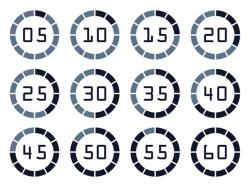If it’s fine with you, I’d love to quickly reference a line from last month’s post, which highlighted the fact that 47% of the time, people’s minds were-a-wandering, leading less happy people.
I’ve since read that the pandemic appears to have exacerbated this condition.
A study coming out of the U.S. has just revealed that over 65% of employees in the U.S. find it hard to concentrate because of their work environment (Work Health Survey 2021, Mental Health America).
So, here’s my question…is this you? Do you reckon you suffer from what’s now known as continuous partial attention?
You know the feeling…your intention is to write a report but now you’re scanning emails and googling totally unrelated unfinished business, all the while checking your social media feed and so on…
I certainly know that I do.
But did you know that in this state of perpetual distraction, your breathing becomes shallow and erratic and it’s possible that you can unconsciously hold your breath for 30 seconds or more?
I most certainly know that I didn’t.
This condition, dubbed email apnoea, has been studied for the past decade by the Institutes of Health and as you might know, the word apnoea smacks of ill health.
It is not good news. Not only are you not being engaged and effective at work, but you’re also throwing a spanner in your health works.
Crucial to staying AIRBORNE and in flow is the ability to identify how we’re travelling moment-to-moment and correcting any imbalances in our energy systems. One such system is our breathing.
So, I’d urge you to pause for a moment and have a sticky beak at your breathing rate right now.
In fact, if you’re game, which I know you will be…let me challenge you to set your timer on your phone for 60 seconds and count your breath cycles.
Go on, give it a go…it’ll only take a minute.
Ready, steady…

A big pat on the back if you took up my challenge!
So, how many cycles of inhalation and exhalation did you calculate? Anywhere between 12-16? If so, count yourself ‘normal’.
According to Charlie Morley, Hay House author and teacher of mindfulness, back in 1929, the average number of breath cycles was 4.9 bpm (breaths per minute).
By 1939 it had increased to 5.3 bpm; 1950 saw it rise to 6.9 bpm; and by 1980 it had risen to 7.8bpm.
So, in the last 40 years, have we ‘normalised’?
I somehow suspect not.
Morley suggests that breath cycles in excess of 10bpm activate the sympathetic nervous system or ‘fight/flight’ response, which is most helpful if you want to temporarily step on the gas but not so helpful for long term health.
The flip side of stepping on the gas is stepping on the brake. But what if you were to cruise in neutral?
What if you were to utilize a breathing technique that, if practised daily, would help you to combat continual partial attentiveness, enable you to focus more, wander less and feel happier?
Interested?
If that’s a thumbs up, tune in next month to find out more.
But in the meantime, do yourself a favour and take 3 long s-l-o-w deep breaths before you close this window and go onto your next online endeavour.
Your body will love you for it.
Also, till then, see how many times you catch yourself breathing!

Caroline Crosbie
Learn how you or your team can stay AIRBORNE, especially in these trying times.
Find out how Caroline and her team can help you today!







